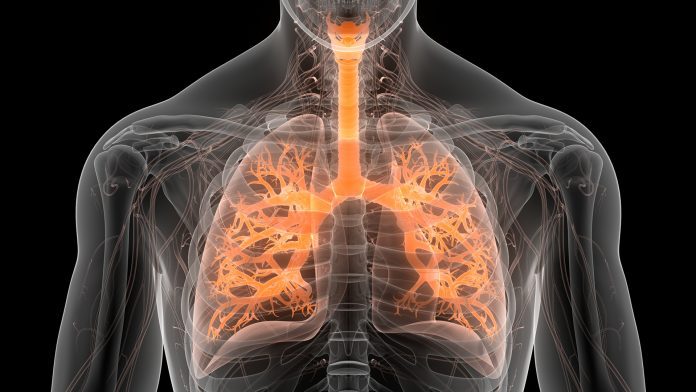
Researchers have identified molecular profiles of the surrounding matrix of common lung cancers, which could help indicate which patients are likely to develop aggressive tumours.
Squamous cell carcinoma is one of the most common lung cancers, however, treatment options for patients are limited and have remained largely unchanged in recent decades. High rates of recurrence and resistance to chemotherapy have meant that less than one in five patients will survive more than five years after their diagnosis.
Researchers from the Garvan Institute of Medical Research have been studying the environment that surrounds these cancer cells in the tumour. A key component of this environment is the extracellular matrix, which is a 3D meshwork of around 300 core molecules.
This matrix is present in all tissues in the human body, providing structural and functional support to hold these cells together. However, in lung cancers, this matrix is fundamentally altered, and changes can promote tumour growth.
Predicting patient prognosis for lung cancer
“Our focus was on how the matrix is changing in squamous cell lung carcinoma, how this might make tumours more aggressive, and how it could be used to help with understanding patient prognosis,” said Dr Amelia Parker, first author of the study.
“Tumours are an ecosystem, made up of cancer cells held together by the matrix – it is this matrix that we think is supporting cancer cells to keep growing and spreading, contributing to the poor outcome for some patients. But we didn’t really have an understanding of what the matrix looks like or why it makes lung cancers resistant to treatment. If we can understand that part of the tumour, we can reveal more effective ways to treat patients by targeting the way the matrix is making cancer more aggressive,” she added.
The researchers believe their findings, could be used to develop biomarkers which could potentially determine which patients might benefit from more aggressive and more targeted treatment for lung cancers.
The researchers, led by Associate Professor Thomas Cox, examined the molecular and protein composition of the matrix around squamous cell carcinoma lung tumours, taken from patient tissue samples.
The research team identified two tumour matrix profiles, in one, the patient prognosis was good, and in the other patient outcomes were poor. The matrix profiles appeared to be established early in the initiation of the tumour and persisted as the tumour growth continued. This shows that the tumour matric profiles can control how the tumour will respond to chemotherapy treatment.
Matrix profiling could be used for multiple conditions
In patients who experienced poorer outcomes, the tumour matrix contained more collagen proteins and more fibrosis, stiffening the tumour structure. This suggested to the researchers that the tumour matrix is capable of remodelling to protect itself from treatment for lung cancers.
The researchers also discovered that, while adenocarcinomas and squamous cell carcinomas appeared similar in the clinic, they were noticeably different in their matrix composition. These differences could be leveraged by existing therapies developed to treat other diseases.
“These two tumours look very similar under the microscope, and are typically treated the same way, but are very different on a molecular level. This sheds light on why some patients progress well and others don’t, and how we might be able to stratify patients to provide more personalised treatment,” said Cox.
The full findings of the study have been published in BMC Genomic Medicine.









